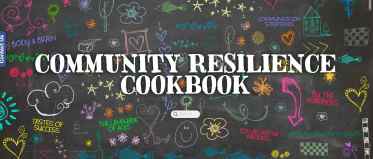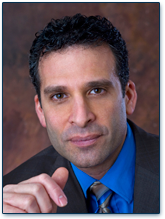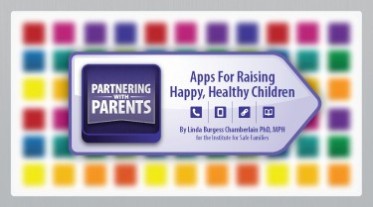
The women and men gathered for a training on trauma and resilience were recovery counselors and social workers, charter-school teachers and prison administrators. But to Stephen Paesani, the child and adolescent training specialist who was leading the session, every person in the room was a potential protective factor in a child’s life.
“When a child experiences adversity or trauma, he goes into the fight-or-flight stance,” Paesani explained. “That’s going to impact brain development. “But no matter what happens, all of you can be the agents for resilience.”
Paesani works for Philadelphia’s Behavioral Health Training and Education Network(BHTEN), which provides training to practitioners and community members, part of the city’s effort to infuse mental health and substance abuse services with principles of recovery, resilience and self-determination.
But BHTEN’s trainings are just one piece of the Philadelphia ACEs story. In this city of 1.5 million—a city rife with disparities of class, education and health, with pockets of multi-generational poverty and trickle-down trauma—the last decade has seen a steady effort to bring understanding of adversity, trauma and resilience to thousands of front-line workers, supervisors and administrators across the map of human services.
This work is not the result of a top-down initiative or a single funder’s vision for change. It is, instead, the gradual flowering of multiple seeds, planted by activist leaders in pediatrics, public health, behavioral health, child welfare, justice and education.
Today, Philadelphia is home to the ACE Task Force, a group of 50 practitioners intent on putting the knowledge of brain development, adversity and resilience to work in pediatric and primary care clinics, child abuse prevention networks and early childhood programs. The social network site ACEsConnection.com recently launched a Philadelphia group whose members share questions, successes and challenges.
And thanks to the Institute for Safe Families, with support from the Robert Wood Johnson Foundation, Philadelphia was the site of the first National Summit on ACEs in May 2013, attended by 160 physicians, academics, social workers and human service administrators. There, speakers called the ACEs movement “a revolution” in thinking about health and illness, human suffering and strength.
In Philadelphia, that revolution began even before the groundbreaking Centers for Disease Control Adverse Childhood Experiences Study (ACE Study) demonstrated the lifelong impact of early adversity.
In the late 1980s, Dr. Sandra Bloom, a psychiatrist and professor at Drexel University’s School of Public Health, and her colleagues began to talk about the adults they were treating at a small inpatient psychiatric center, patients with multiple personality disorder and other complex diagnoses. Many showed symptoms of post-traumatic stress disorder (PTSD). They hadn’t lived through war or survived a typhoon. But they did have one thing in common: They’d been abused as children.
“So in 1998, when the ACE Study came out…it was confirming everything we had been seeing for decades,” Bloom recalled. In the 15 years since, “I have watched the development of a movement,” she said. “There have been people here educating about [ACEs and resilience] for some time, each in their own domains. When they work hand in hand, you can really start to see some widespread change.”
Philadelphia is often described—for better and for worse—as a “city of neighborhoods,” with strong ethnic and local allegiances and a powerful sense of turf that can thwart effective collaborations. The story of Philadelphia’s efforts to prevent childhood adversity and build resilience is not a single narrative, but multiple stories unfolding simultaneously. Only recently have those stories begun to converge.
From the “Brain Group” to the Front Lines: Training Across Four Systems
In the early 2000s, a group of Philadelphia professionals in health, education and human services became inspired by the work of Dr. Bruce Perry, a neuroscientist and founder of the Child Trauma Academy in Houston, TX. Perry’s research focused on how traumatic stress leaves tracks in the developing brain and affects the health of the child. This informal, unfunded “brain group” wanted to translate that science into practice.
The group—which later grew into the Multiplying Connections Initiative—decided to focus on children age zero-to-five, the period that holds both the most potential for harm and the greatest possibility of repair due to brain plasticity, said Leslie Lieberman, director of Multiplying Connections, which is part of the non-profit Health Federation of Philadelphia.
The goal, Lieberman said, was to build the capacity for trauma-informed care in four systems: the school district, public health, human services and children’s mental health.
First, the trainers had to educate themselves. Twenty individuals representing those systems spent a year-and-a-half learning about neuroscience, trauma and recovery. With support from the William Penn Foundation, they developed a curriculum called “Becoming Trauma Informed”; in the first four years, they trained nearly 1,000 professionals across the four systems.
When those professionals said they wanted more concrete tools to help them address the impact of trauma and adversity, Multiplying Connections partnered with the Institute for Safe Families and Dr. Linda Chamberlain to produce the Amazing Brain series. A series of user-friendly, beautifully illustrated booklets that explain complex concepts about brain development and how it is affected by exposure to trauma and adversity as well how to promote resiliency and protective factors.
As the training rolled out, professionals recognized that they needed better supervision to support their learning about trauma informed care and put it into practice. Multiplying Connections returned to William Penn in 2011 with a new proposal: to conduct intensive trainings on reflective supervision while also expanding the reach of the basic trauma training.
When Multiplying Connections begins work with a new agency, Lieberman said, the first step is to imagine the experience through the eyes of a patient or client: “How are people greeted? What does the physical setting look like? Are there signs telling you what not to do? Are there people in uniforms? [Being trauma-informed] is being very thoughtful and intentional about all those questions.”
Trainers encourage participants to come to workshops in pairs, because research shows people are more likely to create change if they attend a training with someone else from the same organization.
Multiplying Connections has worked with providers of homeless services, Head Start teachers and after-school program staff. Lieberman says “it starts with a conversation with an organization, an assessment of their readiness and what kinds of resources they have. At minimum, it’s a two-year process. But I think it takes five, ten or fifteen years for system-level, citywide change.
In the meantime, she said, the ACE Study has “brought scientists to the table; it’s brought economists to the table. Public health folks. Physicians. It’s definitely broadened the conversation.”
Educating a Child’s First Teachers
When Suzanne O’Connor, a manager at United Way of Greater Philadelphia and Southern New Jersey, attended the 2013 National Summit on ACEs, she felt as though decades of work on adversity and resilience had finally gained “official” status.
Since 2009, the Healthy Parenting Initiative (HPI), a project funded by United Way and a local philanthropist, has trained the people who nurture infants and children, including early childhood education teachers, aides, administrators and clinicians. They learn about brain development and attachment, trauma, protective factors and recovery.
There is also a six-week program called Nurture the Parents, aimed at parents of pre-school children and offered through childcare centers. In 2013, HPI expanded to include training courses for 180 Philadelphia School District staff.

This article about Philadelphia, PA is one of several profiles of communities that are becoming trauma-informed. They are published together in the Community Resilience Cookbook.
______________________
In addition, a program for a small group of clinicians examines how a new assessment tool, called the Neurosequential Model of Therapeutics, does “brain-mapping”—essentially, pinpointing areas where, due to trauma, the brain may not have developed in a healthy way. Practitioners can then target their interventions—gross motor activities with water and sand, for instance, or rocking chairs and weighted blankets—to help particular children.
Some Healthy Parenting Initiative courses are offered for college credit. And a small research study has shown that the new knowledge makes a difference. “The training influenced the way teachers perceived children’s behaviors,” O’Connor said. The next phase of research will look at how children themselves are affected when their caregivers—whether parental or paid—learn to think differently about the causes of behavior.
Years before the Healthy Parenting Initiative, when O’Connor headed a Philadelphia child care center whose teachers received trauma training, she noticed an immediate effect. “Instead of looking at the parent who dropped off a kid who was crying or who had a dripping nose, and thinking the mom didn’t care, now [the staff] thinks, ‘I wonder what’s going on?’ HPI is changing the culture by training teachers to understand how stress impacts parents, how not to blame and shame them and by building a more helpful and compassionate early childhood education workforce.”
The Revolution Starts Here
For years, the directors of the Institute for Safe Families (ISF) had been using theories of trauma and recovery to inform their work in preventing family violence. But when they invited Dr. Robert Anda to discuss his work with 400 practitioners in 2006, his words prompted a new urgency.
“Anda’s talk was riveting,” recalls Martha Davis, former ISF executive director and now part of the Vulnerable Populations team at the Robert Wood Johnson Foundation. “The big existential question was, ‘How can people hurt each other so much?’ The idea that hurt people hurt people was a really helpful concept. It helped us stop blaming people for all the choices they were making, and it opened up this whole other realm of compassion.”
In April 2012, ISF convened the ACE Task Force, a group of pediatric practitioners who wanted to put ACEs theory into practice. The task force soon grew to include specialists in behavioral health, child abuse prevention, education and domestic violence. Lieberman, head of Multiplying Connections, joined; so did O’Connor, from United Way. Bloom is one of three co-chairs, along with Dr. Joel Fein, a pediatrician at The Children’s Hospital of Philadelphia, and Dr. Lee Pachter, chief of general pediatrics at St. Christopher’s Hospital for Children. The group meets quarterly.
“The task force brings together diverse and possibly competitive organizations around a topic they are passionate about and allows them to converse about it in a non-threatening way,” said Fein. He said ISF—with neither funding to offer nor a reason to compete—played a critical role as a neutral convener, a role that is carried on now by the Health Federation of Philadelphia.
But the task force’s accomplishments go beyond talk. Members of the group, with funding from the Robert Wood Johnson Foundation, conducted the Philadelphia ACE Study with more than 1,700 participants to look at the childhood stresses particular to growing up in an urban area.
The task force doesn’t demand that its members use the same protocols or training materials; instead, it gives them a shared language and purpose, along with the reminder that no one organization can solve complex social problems alone.
“So, what does it look like to be able to turn a kid’s life around? We’re working to hunt down that secret sauce, to be able to replicate it and teach other people.”
Outside the ACE Task Force, other practitioners are addressing ACEs in a variety of ways. Dr. Kenneth Ginsburg, a  pediatrician whose national and international work focuses on adolescent resilience, is directing a project involving five Philadelphia-area youth-serving agencies, an attempt to zero in on the key ingredients of nurturing adult relationships with youth. “We know on paper that connection is the most valuable thing [for children],” he said. “When parents don’t give that, other adults have to chime in. So, what does it look like to be able to turn a kid’s life around? We’re working to hunt down that secret sauce, to be able to replicate it and teach other people.”
pediatrician whose national and international work focuses on adolescent resilience, is directing a project involving five Philadelphia-area youth-serving agencies, an attempt to zero in on the key ingredients of nurturing adult relationships with youth. “We know on paper that connection is the most valuable thing [for children],” he said. “When parents don’t give that, other adults have to chime in. So, what does it look like to be able to turn a kid’s life around? We’re working to hunt down that secret sauce, to be able to replicate it and teach other people.”
Another project is Healing Hurt People, founded by emergency room physician Dr. Theodore Corbin; it is a team-based, trauma-informed approach to helping patients seen in emergency departments for gunshot, stab or assault wounds. The program helps connect those patients to resources for housing, education, legal services and emotional support.
And there is evidence that ACE awareness is percolating into new realms of the city. In early 2014, the U.S. attorney in Philadelphia held a forum on the traumatic impact of violence, attended by hundreds of professionals in criminal justice, education and social services. Two days later, the city’s public radio station and the Children’s Crisis Treatment Center co-hosted a community discussion—the first of several—on children and toxic stress. There, Dr. Arthur Evans, commissioner of Philadelphia’s Department of Behavioral Health and Intellectual Disability Services (DBHIDS) suggested that Philadelphia was becoming an epicenter of ACE-informed work and emphasized the work that his department has been doing for nearly a decade to both build capacity for behavioral health organizations in Philadelphia to provide services from a trauma informed approach as well as make trauma treatment for children and adults more available and accessible.
The Philadelphia ACEsConnection group, in its first six months, drew more than 130 members, including younger professionals, students, and people working in education, medicine, juvenile justice and philanthropy.The group has also sponsored two “meet-ups” with speakers and opportunities for informal networking. “I think this is going to be an effective way to reach the next generation of people doing this work,” said Lieberman. At one of those meet-ups, the city’s largest charter school operator described a plan to bring a trauma-informed approach to every aspect of his system, from student discipline to teacher support.
Meanwhile, the ACEs Task Force is developing an action plan focused on three priorities: to educate the community about ACEs; to develop a deeper understanding of practical and successful interventions and to incorporate ACEs research into the curricula of undergraduate and graduate institutions.
And the work continues—in training rooms where front-line workers absorb ACEs 101; in pediatric clinics where residents learn that a patient’s lack of eye contact may be a sign of fear, not disrespect; and in one especially raw corner of the city, where the 11th Street Family Health Services puts ACE theory into daily practice.
The clinic sits in one of the city’s poorest neighborhoods, a short hop in miles and a long distance in resources from the glittering towers of Center City. But a 54-year-old patient named Teresa calls it home.
Starting at the age of eight, Teresa (not her real name) was molested and raped by her father. By the time Teresa was a young adult, she recalled, “I lived in terror. I couldn’t talk to people. I had a powerful sense of shame about who and what I was.”
She sought care at 11th Street because she needed contraception; a thorough exam showed that she also needed thyroid medication. When Teresa told her story, the nurse-practitioner suggested she work with adance/movement therapist at the center, where primary care is integrated with behavioral health, arts therapies, parenting classes and peer support groups for smoking cessation, pain management and weight control.
11th Street aims to develop “micro-systems” around each patient, assembling a team of practitioners based on each person’s goals. The center is also in the midst of a three-year process of becoming a Sanctuary organization, applying principles of trauma and resilience in every interaction, from the way receptionists answer the phone to the way managers conduct meetings.
As for Teresa, she’s still dancing. “I learned that my scars were just scars; they were not my essence. And I will never forget how I was received here, even by the receptionist at the front desk. It was with love.”
_____________________
This is one of several articles about how different towns, cities, states and provinces are beginning to embrace an ACEs movement and become engaged in preventing/treating ACEs and promoting resilience. They were done as part of a Community Resilience Cookbook, produced by the Health Federation of Philadelphia with support from the Robert Wood Johnson Foundation.





Comments (1)